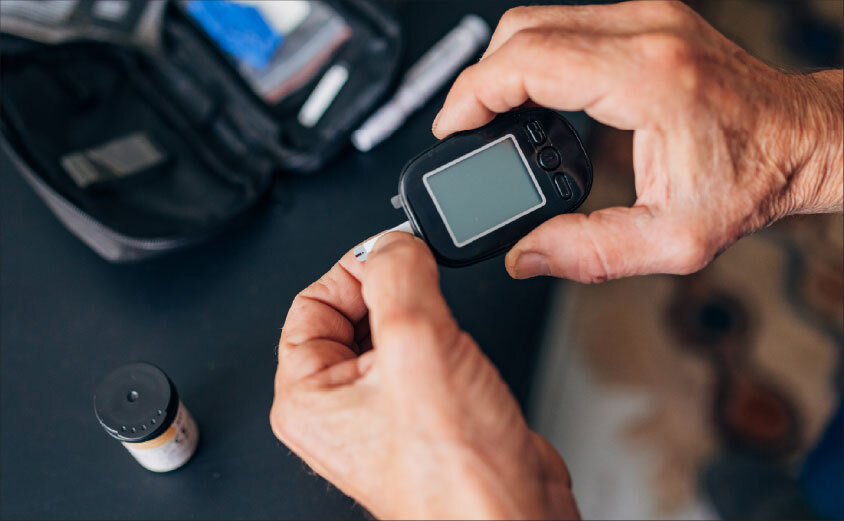How Saudi Arabia’s Growing Diabetes Population is Boosting the Market for Glucose Meters and Insulin Delivery Solutions

The Saudi Arabia Diabetes Devices Market was valued at USD 200.72 Million in 2024 and is projected to reach USD 325.66 Million by 2030, with a compound annual growth rate (CAGR) of 8.4% from 2025 to 2030.
The Saudi Arabia Diabetes Devices Market reveals notable regional differences, which are influenced by factors such as population, lifestyle, and healthcare infrastructure. The Eastern Province and Riyadh report the highest prevalence of diabetes, with rates surpassing 17%. This makes these areas crucial markets for blood glucose monitoring devices and insulin delivery systems. Meanwhile, the Western Province, including Makkah and Madinah, shows significant demand driven by urbanization and increasing obesity rates.
In contrast, southern regions like Jizan exhibit a lower diabetes prevalence of around 9–10%, resulting in a smaller market for diabetes-related devices. Central and northern areas demonstrate moderate adoption rates, shaped by factors like healthcare accessibility and awareness initiatives. Overall, urbanized and industrially advanced regions dominate the consumption of these devices, fueled by higher disposable incomes and superior healthcare facilities.
However, rural and less populated areas present opportunities for growth, contingent upon the expansion of awareness campaigns and healthcare outreach. This regional distribution underscores the necessity for customized marketing strategies and improved device accessibility across the diverse provinces of Saudi Arabia.
Innovations like continuous glucose monitors (CGMs) and smartphone-integrated devices improve patient compliance and convenience.
The Saudi market is experiencing a significant transformation in diabetes care, largely due to rapid advancements in technology. Innovations such as continuous glucose monitoring (CGM) systems, smart glucometers, and insulin pumps that are integrated with mobile applications are leading the way. These technologies enable patients to monitor their glucose levels in real time and share this data with healthcare professionals remotely, which enhances adherence to treatment plans.
As these devices become smaller and more user-friendly, they are appealing to a wider range of patients, particularly those in urban areas and those who are tech-savvy. This wave of technological progress not only supports personalized diabetes management but also allows individuals to make immediate adjustments to their insulin dosage and dietary choices.
The advent of AI-enabled and connected devices has further boosted patient engagement, contributing to a reduction in complications and hospital visits. As a result, Saudi Arabia is emerging as a promising market for advanced diabetes technology, showcasing the potential for improved health outcomes in the region.
Investments in healthcare infrastructure and e-health services support widespread adoption of diabetes devices.
Under the Vision 2030 program, Saudi Arabia is making significant investments in healthcare infrastructure with the goal of modernizing hospitals, establishing health clusters, and integrating digital health services. The country's policies are focusing on preventive care, chronic disease management, and the adoption of e-health solutions, all of which are driving the use of diabetes devices. In addition, the government is supporting subsidized healthcare services and programs aimed at raising diabetes awareness, ensuring that both urban and rural populations have access to essential monitoring tools. Efforts to train healthcare professionals in advanced diabetes care are also underway, helping provide better guidance to patients on how to use these devices, thereby increasing their adoption. Collectively, these initiatives are enhancing the healthcare ecosystem in Saudi Arabia, fostering a supportive environment for the growth of the diabetes devices market.
Public education campaigns are promoting early detection and proper diabetes management, boosting device usage.
Public awareness campaigns aimed at lifestyle changes, early diagnosis, and managing chronic diseases are helping residents in
Saudi Arabia recognize the importance of keeping track of their blood glucose levels. Hospitals, NGOs, and government bodies are working hard to educate patients about the complications of diabetes and the steps they can take to prevent them. These health awareness initiatives encourage regular testing, the use of modern monitoring tools, and following prescribed treatment plans. As a result, patients are becoming more invested in managing their diabetes with tools like portable glucose meters and wearable devices. This increased awareness not only leads to better health outcomes but also boosts the market for diabetes management devices, driving demand and enhancing patient involvement.
Greater availability of devices through pharmacies, online platforms, and insurance coverage makes them accessible to more patients.
The accessibility of diabetes devices has greatly improved, thanks to their availability in pharmacies, clinics, and online stores. Many patients can now easily get the tools they need for daily monitoring. With insurance coverage and government subsidies, these devices have become more affordable for more people. Urban areas enjoy efficient distribution networks, and rural areas are slowly catching up through telemedicine and e-health initiatives. This combination of easy access and financial help promotes consistent use of these devices, contributing to a steady rise in their adoption and growth throughout the country.
The rising population of diabetics in Saudi Arabia is driving up demand for insulin delivery and blood glucose monitoring equipment.
Saudi Arabia is facing a significant diabetes challenge, with millions of adults living with the condition, especially type 2 diabetes. This is largely due to lifestyle factors like obesity and a lack of physical activity. As the number of people affected continues to rise, there’s an ongoing need for effective ways to manage diabetes. This includes devices for monitoring blood glucose levels and systems for delivering insulin. With predictions showing that diabetes rates will keep climbing in the coming years, both healthcare providers and patients are putting more emphasis on regular check-ups and timely treatment. As a result, the demand for diabetes management devices is growing in hospitals, clinics, and home care settings, turning Saudi Arabia into an important market for global manufacturers of these essential products.
Competitive Landscape
Some of the major companies operating within the Saudi Arabia Diabetes Devices are: Abbott Laboratories, DexCom Inc, Roche Holding AG, Bayer AG, Novo Nordisk A/S ADR, Johnson & Johnson, B. Braun, Sanofi SA, Insulet Corp, Medtronic PLC and Others.